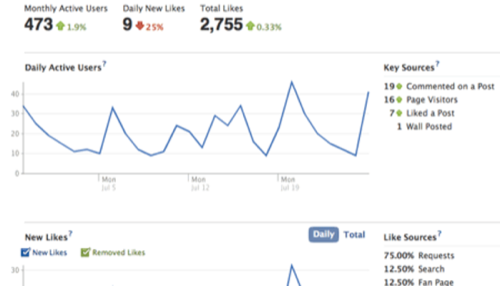You probably have a good idea of how many page views and unique visitors your company’s website gets, but how many people are truly interacting with your brand? How successful are your digital marketing efforts?

Traditional Web analytics metrics can provide a ton of actionable intelligence about your site’s users, but only when they’re combined with other measurements does the full picture start to emerge. With so many measurements and data points flying across your desktop, it’s hard to know where to focus. Here are five metrics to pay particular attention to.
Conversion Rate
Although it’s been a standard metric in analytics software for years, the conversion rate is still one of the most useful for business owners. For the uninitiated, the conversation rate is the ratio of website users who complete a particular action, or goal, defined by you, the site owner. For a small business, that might be clicking the “Confirm Order” button in a shopping cart, or signing up for an e-newsletter. If you don’t have any goals set up in your analytics program, you’ll want to get those up and running so you can understand how successful your site is.
Referring Sites and Keywords
Where is your site’s traffic coming from? If it’s other websites, which ones? If it’s Google, do you know precisely which search keywords are bringing people in? Google Analytics and similar platforms offer reports that answer these questions, and they’re worth a look. Are you seeing a low number of visitors coming from Facebook.com? Perhaps it’s time to ramp up your social media strategy. Did five people find your site by searching for “widgets for sale” yesterday? You might want to include those keywords in your site’s title tags to get that number even higher.
Facebook: Daily Active Users
Congratulations, you have a million Facebook fans! Now, how many of those people are actually interacting with your company each day? The newly redesigned Facebook Insights puts a renewed emphasis on a metric called Daily Active Users, which is defined as anybody that has commented, liked, visited or posted content to your Page each day. This number can be rather sobering, but it also provides insight into what’s working and what isn’t. If your Active Daily Users seem too close to zero for comfort, try posting different status updates and links. Pay attention to any spikes you may see in this chart. Does engagement bottom out on the weekends? Does it go through the roof every time you ask your users a question? The answers can help inform your overall social marketing strategy.

Twitter: Klout Score
As with Facebook fans, everybody wants a massive number of Twitter followers, but how many of those followers are auto-following, pornoriffic spam bots? One way to more accurately measure your brand’s effectiveness on Twitter is by checking your account’s ranking on Klout. This number, known as your Klout Score, is a zero to 100 ranking that estimates your degree of influence within Twitter based on several factors, such as number of active followers, links clicked and engagement with other users.
Email Open & Click-Through Rate
Even as social media takes center stage, good old fashioned email marketing can be extremely impactful. If you send out regular e-newsletters, be sure to pay close attention to the open rate on your email campaign reports. It will only be a fraction of total subscribers, but you can ensure more people open your emails by not sending them too frequently, writing attention-grabbing subject lines and generally being useful and informative for your subscribers. Some email marketing software, such as Campaign Monitor, offer A/B split testing so you can try out multiple versions of the email and see which one works best. Next, you’ll want to drill down to the click-through data. How many people clicked on something? What did they click on? This data can have enormous significance for your business and help you make decisions when forging your email marketing strategy.
Are there are any other Web traffic or engagement metrics that you look out for? Leave more examples in the comments.

















